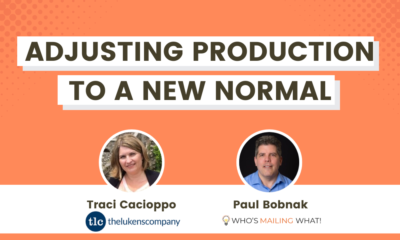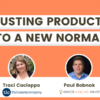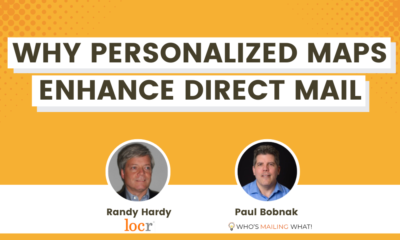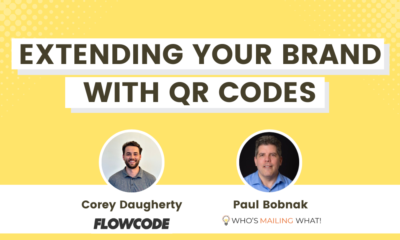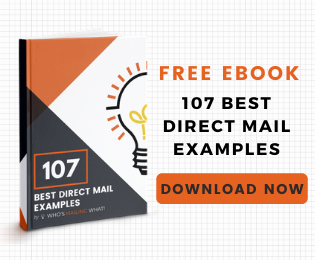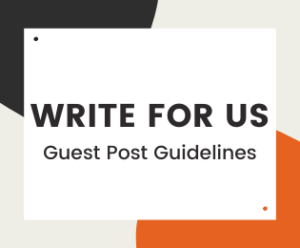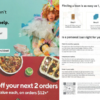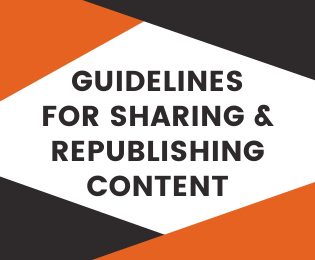MEET THE MAILERS
Meet the Mailers: Direct Mail with a Personal Touch
In this episode, we talked with Profit 911 about how the company makes direct mail useful for its small business clients.
In this episode, I talked with Justin Miller, President of Profit 911, direct mail marketing agency. Based in East Moline, IL, Profit 911 prints and mails millions of letters, newsletters, and postcards each year for clients around the country.
We talked about how the company makes direct mail useful for its small business clients.
Justin emphasized the importance of newsletters in communicating with your customers and building loyalty:
“If they send personal and heartfelt, this is probably the best bang for their buck of any piece of print that could go out the door.”
 Justin Miller
Justin Miller
President
Profit 911
We also covered some other topics, such as:
- Justin’s background that led to direct mail and print
- Profit 911’s services
- The company’s handwriting solutions
- His entrepreneurship podcast (and dinosaurs)
- Trends in the industry
- Two of his most favorite pieces of mail
Here are some questions and answers from our conversation (edited for clarity and space):
- So let’s talk more broadly about Profit 911. As a marketing agency, can you quickly run down the services that you provide?
I believe the industry is fairly commoditized, which I don’t see as a problem, actually – a lot do. But I don’t think we have any services that others don’t offer. It’s more than how we offer them. So I’ll switch the question a little bit that way. Most of our clients are not buying print and mail services, meaning they come to us at objective level, meaning “I need new clients” or “I need to grow one way or another” and we work with them through that entire process to ultimately at the end of the day arrive at a direct mail piece that will work for them. But it’s that whole front end of taking a smaller business client that wouldn’t get a whole lot of attention elsewhere and doesn’t have the sophistication to do copywriting, graphic design, to get a direct response piece out the door.
Or they’ve started studying some of that and they’re really excited about it and they’re about to take a massive misstep. I think we all did as entrepreneurs… you got really excited about something and didn’t understand the other 90% and we help them through to maximize their chance of success. So at the end of the day, what goes out the door is 90% similar to what you could get elsewhere, but how we arrived at it is completely different.
- We all know that postage has been going up dramatically in the last couple of years. So what kinds of things can marketers do to keep costs under control?
Small and medium businesses are our bread and butter depending upon how you categorize most of them. A lot of them are professional service providers, so they’re not traditional users of direct mail. Sure, there’s some in financial services, which is a big category. There’s some in healthcare, but who we’re serving tend to be smaller providers of those services. So yes, the postage and the overall cost of the campaign is a huge concern to them especially with rolling price increases every six months.
However, I have always kind of taken the attitude and therefore trained clients to adopt the attitude that as long as the math is still working and profitable every time that postage goes up, there’s less mail in that mailbox. And you know the broader industry and the large players – that probably scares because they have their hands in a large chunk of that volume and it goes down, that’s obviously a problem. For the small guys, they’re positioned better to be able to take the hit, adjust quicker, track in a quicker manner and ultimately, as long as they’ve priced their services appropriately to where there’s enough margin, this is an incredibly viable channel and also not a substitute for other channels.
I stopped offering digital services, but I’m not naive to it and it certainly has its place in marketing and they all kind of lift each other. We just as a provider only focus on the mail side, but I still can’t help myself if I see something way off to say “hey, you might wanna look at X but unfortunately I can’t help you build that.” But yeah, I mean price increases …at this point, it is what it is, they come through, we have to push them along obviously you know our costs internally – not just postage – keep going up. So every six months there’s one of those price increase letters going out and like I said, as long as they’re tracking their math and it’s still profitable at the end of the day, you know the game got easier.
- You mentioned newsletters before, so let’s get into that. What is it about newsletters that makes them stand out to customers of your clients?
This is a foundational piece in well, my marketing, before we became an agency – long before – was a print monthly newsletter, you know and there’s a few reasons I believe in them more. First off, I didn’t invent the concept, obviously. You know I’m not old enough to do that. I learned a lot of the pieces I implemented from Dan Kennedy. That’s my world. [B]ut our newsletters and what we encourage our clients to do is keep them lighthearted, personal and fun. So for me this was a natural fit. I came from the entertainment world initially. Yeah, it matched. But I don’t care if our client is a podiatrist, it still should be entertaining and fun. And this is tough. It’s a struggle sometimes, it’s a branding thing sometimes. And we have to dance the line a little bit. But if they send a corporate piece monthly and … it’s just gonna get thrown away, and they’re all gonna get thrown away eventually, right? But it’s gonna get thrown away without making an impact.
[O]urs come across as if they could have produced them in the office themselves. And we like recipes. We like jokes, we like comics. But most importantly, we like personal things about the entrepreneur and owner. That’s something a small business has that a larger business has trouble replicating. “Here’s what’s actually going on in the owner’s life”. And once they’re willing to share that and they’ve mailed that newsletter five or six months, they’ll never stop mailing it, because they’ll start getting response. If they send personal and heartfelt, this is probably the best bang for their buck of any piece of print that could go out the door. They start seeing people coming in mentioning something they had read as if you’re personal friends.Now obviously there has to be an ROI other than making people happy, right? So with the newsletters, on the larger distribution ones we have call tracking and recording for several times and it’s amazing if you listen to call recordings, how many people chose to call the phone number off that newsletter as their point of entry into, say, a medical practice. That phone number should be saved in their cell phone of the clinic … they’re for some reason they’re looking at the newsletter and that’s where they got it from. So reminding them you exist is important. Also, some of the calls are referral calls, which is quite interesting, which means the newsletter got passed along. Which, being an outsider to the industry, I always thought pass along was complete garbage and and bull for a sales rep to help sell something. But now there’s proof: it does happen. …enough to make a significant impact does, which is crucial to this, particularly if it was fun newsletter or you happen to mention their name, then they’re likely to show other people.
We do kind of an annual magazine/catalog/magalog/hybrid for our own services and a couple of clients have followed suit with what they’ve seen us do. It is quite amazing that that particular piece, oftentimes over a year later is mentioned. So it’s just standing out being different. And if you have something there that’s valuable enough for them to keep around, they will keep it around, particularly if you have a long sales cycle. I mean, a lot of print stuff’s good for long sales cycles, that really helps sales reps build that.
- In listening to your clients, what kinds of things do they say that are their biggest concerns right now?
They’re always kind of shifting. I will say with the small business client ones, the biggest common theme is speed to response. So they don’t actually voice it, but it’s voiced in sales objections and ROI conversations, and it’s buried between the lines is … “I’m putting money out on this. How quickly can I see ROI and and how? How large a response should I get?” You know, they’ve heard a lot of numbers.
If they started researching direct mail, “I get a 1% response, 2% response. I’ll be rich!” So we often are having expectations, conversations around that and letting them know. Track your percentages, but dollars at the end of the day are what matter more than percentages. Did you make money or not?
Because we can take a tiny list of your best customers and get a 50% response rate. Or we can get less than a 1 and both may be a success depending on what they’re trying to do with it. So a lot of people that have never mailed before, they get excited about mail, believe that they’re going to put something in someone’s mailbox that will directly result in an immediate purchase. [I]t’s the hardest thing to do, bar none. And it may not be necessary for success and business growth. A lot of times we’re taking that conversation and bringing it around to things that will make a difference in another way financially, but in another way, other than an immediate new client direct sale. A lot of these things sit around, a lot build on each other. Newsletters I believe are probably the most impactful thing you can do. However, if you mail once, twice, three times even, and stop … don’t mail at all. [W]e think the magic number is after five or six months that things start really working. So that’s a difficult conversation to have with someone that doesn’t have the budget or patience to wait for that ROI has to be had, because that’s really the expectation.
The other thing is the follow-ups. “Yeah, I already mailed someone. Why should I mail them again?” That’s a concern. “Am I wasting money? What happened on the first one?”
A winning list is a winning list. We’ll take that any day. My concern as an agency owner, which is like the flip side of what you ask is, can the client sustain a success when we get it? So we’re very cautious with what we mail and we turn down a lot of work and don’t mail for a lot of people that we consult with because we want this thing to have a better chance than not of success. Every once in a while you get a slam dunk and it’s a piece you can roll out as a control. But the general world, not so much about a piece that you can repeat and roll out elsewhere. And then the concern is can the service provider, do they have capacity to deal with that? And oftentimes they don’t. In the businesses we deal with, which is a shame to us because you know we just want to repeat, repeat, repeat. But again that’s the dream. That’s the best case scenario. It’s not necessarily the norm, but it’s fun when it happens.
- You also provide automated handwriting solutions for mail. What kinds of correspondence are we talking about here?
So there’s a couple of ways we use handwriting. Usually it’s an enclosure to a larger piece, maybe a pre-consultation package going to someone that has your traditional literature and we wanted to simulate the sales rep. “Hey, take a look at this before we meet. Looking forward to …” – something like that. So some transactional piece. Obviously there’s some clients [that] use them for birthday cards and stuff like that. Or pre-form handwriting a lot of clients we have built into their CRM. They can type a couple sentences and bam, send it out. We don’t do a whole lot of handwriting at scale here. We typically will partner or refer that type of work out. It’s another one of those that in the past, I don’t know probably, what, five years, there’s become a lot of service providers doing handwriting solutions. So internally we don’t have a massive capacity and there are so many in the world that do a great job at it that we’re happy to tie into their offerings.
Usually discussion around handwriting is cost versus benefit as it is with everything. But that would typically be a direct mail piece that has a higher cost than anything else. So it’s cost versus benefit and the discussion we’ll turn to “All right, how sophisticated is the buyer? Can they tell the difference between a really good lasered handwriting font versus a pen on paper? And if they’re that sophisticated, can they tell that the pen didn’t move left to right?” You know, we’re way down in the weeds at that point. So there are use cases for it, not a major portion of what we do. I think it’s a very cool technology by the way. But I think it’s better as a programmatic thing tied into a follow up system.
- What kind of trends do you see overall for direct mail in the next year, couple years?
I try to keep my finger on the pulse of the industry but not get caught up in shiny objects. This was an interesting industry to learn from the outside in. It was kind of a pain. A lot of the processes, equipment, software seemed very antiquated when I came from the digital side over to the direct mail side. So they’re a little behind on that stuff. You know, DM2.0 is probably like the most … the highest tech offer tied to direct mail that’s an off-the-shelf type thing.
Yeah, you know, it’s a lot of what we were doing on the digital side in a very simplified manner to be implemented easily from what I saw. So hopefully you guys continue gaining traction with that because I think there’s a use for it. But I don’t see any macro changes overall other than continued price increases.
It’s just important that people track. I’m an entrepreneur myself, so you know, I got caught up on shiny marketing objects for a good decade or more. And I try and bring them back to those fundamental things and the basic human psychology behind the pieces and just stay focused on that and run the course.
- Right – and track everything.
Yeah, as much as possible… it should annoy you if you can’t track it. Sometimes you can’t, and there’s channel bleed, obviously they have to be aware of that, but at the end of the day, you make the decisions you can with the information you have and if you see something work, by God, increase it while it still works.
Here is our conversation (with all questions and answers). We’ve added timecodes for your convenience.
Thank you very much, Justin, for sharing your perspective and your expertise! To learn more about Profit 911, visit their website at Profit911.biz.
Your comments and ideas are very important to us in making your Who’s Mailing What! experience even better for you. Through these engaging talks, we hope you’ll take away practical tips, insights, and personal stories to inspire and build your own success.
If you have any feedback — or are interested in sharing your story and viewpoint with our wide and diverse audience on “Meet the Mailers” — please reach out to me. I’d love to hear from you!











